Grasslands
Grasslands are vast areas dominated by grasses and other herbaceous plants, with few trees or shrubs. They are found on every continent except Antarctica and are known by different names in different regions, such as prairies in North America, steppes in Eurasia, and savannas in Africa.
Characteristics of Grasslands
- Grasslands are characterized by their wide, open spaces with few trees and shrubs.
- They receive more rainfall than deserts but less than forests, making them ideal for grasses and other herbaceous plants.
- Grasslands are home to a diverse array of wildlife, including grazing animals like bison, antelope, and zebras, as well as predators like lions and wolves.
- They are prone to frequent fires, which play a crucial role in maintaining the grassland ecosystem.
Types of Grasslands
There are two main types of grasslands:
- Temperate Grasslands: Found in regions with harsh winters and hot summers, such as the prairies of North America and the steppes of Eurasia.
- Tropical Grasslands (Savannas): Found in tropical regions with wet and dry seasons, such as the African savannas.
Importance of Grasslands
Grasslands are important for several reasons:
- They provide grazing areas for livestock and wildlife.
- They are valuable for agriculture, providing fertile soil for crops.
- Grasslands play a role in carbon sequestration, helping to mitigate climate change.
- They support unique ecosystems and biodiversity.
Study Guide
Here are some key points to remember about grasslands:
- Describe the main characteristics of grasslands.
- Explain the differences between temperate grasslands and tropical grasslands.
- Discuss the importance of grasslands for both human activities and the environment.
- Identify some of the wildlife that can be found in grassland ecosystems.
By understanding the unique features and significance of grasslands, we can appreciate the importance of conserving and preserving these valuable ecosystems.
[Grasslands] Related Worksheets and Study Guides:
.◂Science Worksheets and Study Guides First Grade. Food Chains
Study Guide Food Chains
Food Chains  Activity Lesson
Activity Lesson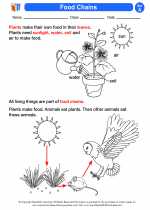 Food Chains
Food Chains  Worksheet/Answer key
Worksheet/Answer key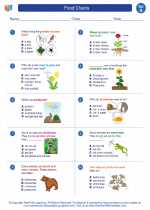 Food Chains
Food Chains  Worksheet/Answer key
Worksheet/Answer key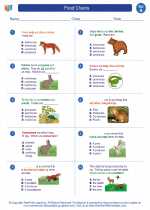 Food Chains
Food Chains  Worksheet/Answer key
Worksheet/Answer key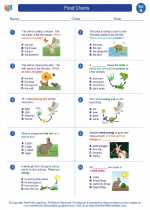 Food Chains
Food Chains  Worksheet/Answer key
Worksheet/Answer key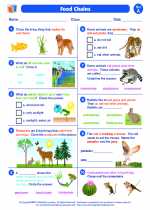 Food Chains
Food Chains  Vocabulary/Answer key
Vocabulary/Answer key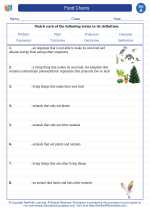 Food Chains
Food Chains  Vocabulary/Answer key
Vocabulary/Answer key Food Chains
Food Chains 

 Activity Lesson
Activity Lesson
 Worksheet/Answer key
Worksheet/Answer key
 Worksheet/Answer key
Worksheet/Answer key
 Worksheet/Answer key
Worksheet/Answer key
 Worksheet/Answer key
Worksheet/Answer key
 Vocabulary/Answer key
Vocabulary/Answer key
 Vocabulary/Answer key
Vocabulary/Answer key

The resources above cover the following skills:
LIFE SCIENCE
From Molecules to Organisms: Structures and Processes
Design a solution to a human problem by using materials to imitate how plants and/or animals use their external parts to help them survive, grow, and meet their needs (e.g., outerwear imitating animal furs for insulation, gear mimicking tree bark or shells for protection).